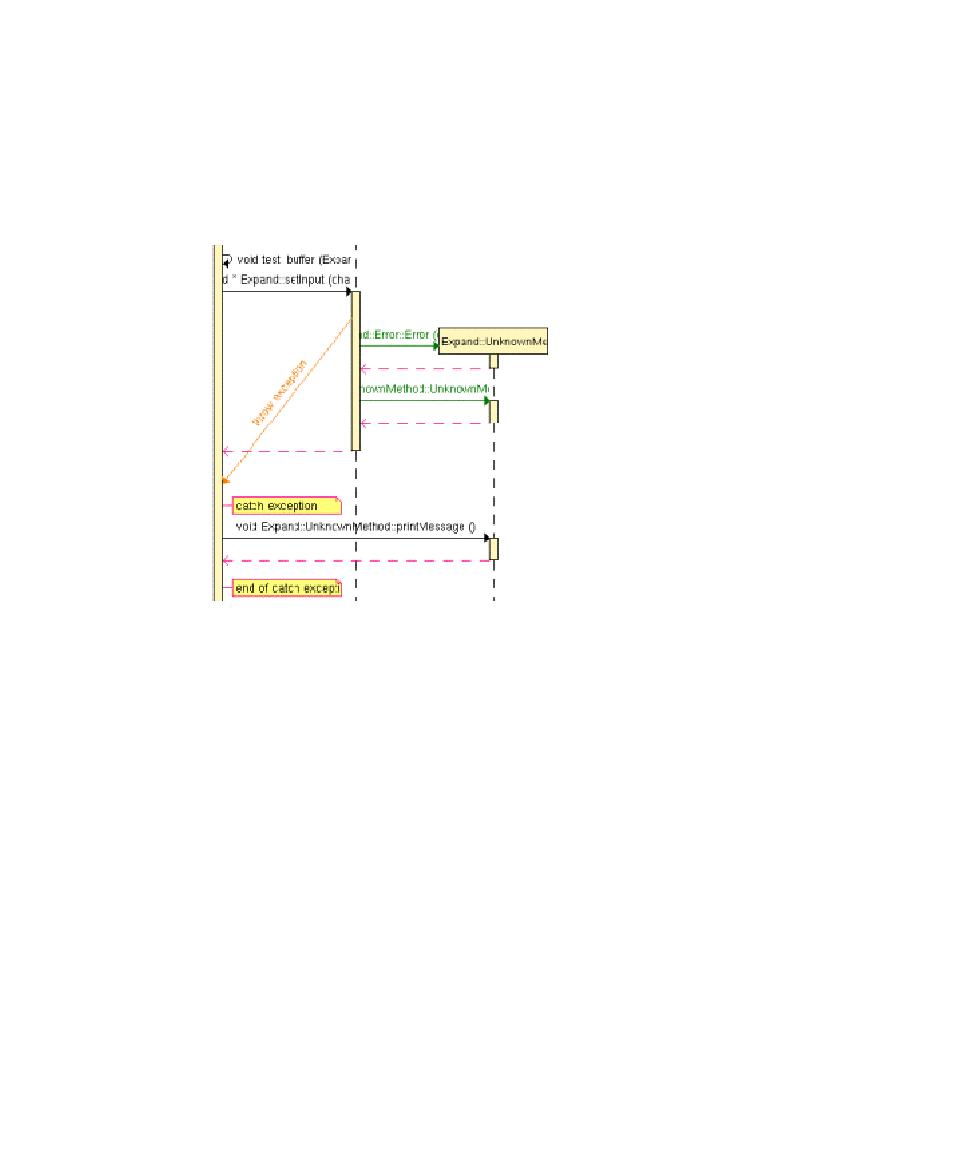
Runtime Tracing
Product Overview
Exceptions
When tracing C++ exceptions, Runtime Tracing locates the throw point of the
exception (the throw keyword in C++) as well as its catch point.
Exceptions are displayed as a slanted red line, as shown in the example below,
generated by Runtime Tracing.
To jump to the corresponding portion of source code:
1.
Click an instance to open the Text Editor at the line in the source code where the
exception is thrown.
2. Click
the
catch exception or end of catch exception notes to open the Text Editor
at the line where the exception is caught.
To filter an instance out of the UML sequence diagram:
1.
Right-click an exception and select Filter instance in the pop-up menu.
Actors
An actor is a model element that describes a role that a user plays when interacting
with the system being modeled. Actors, by definition, are external to the system.
Although an actor typically represents a human user, it can also represent an
organization, system, or machine that interacts with the system. An actor can
correspond to multiple real users, and a single user may play the role of multiple
actors.
Shape
19
